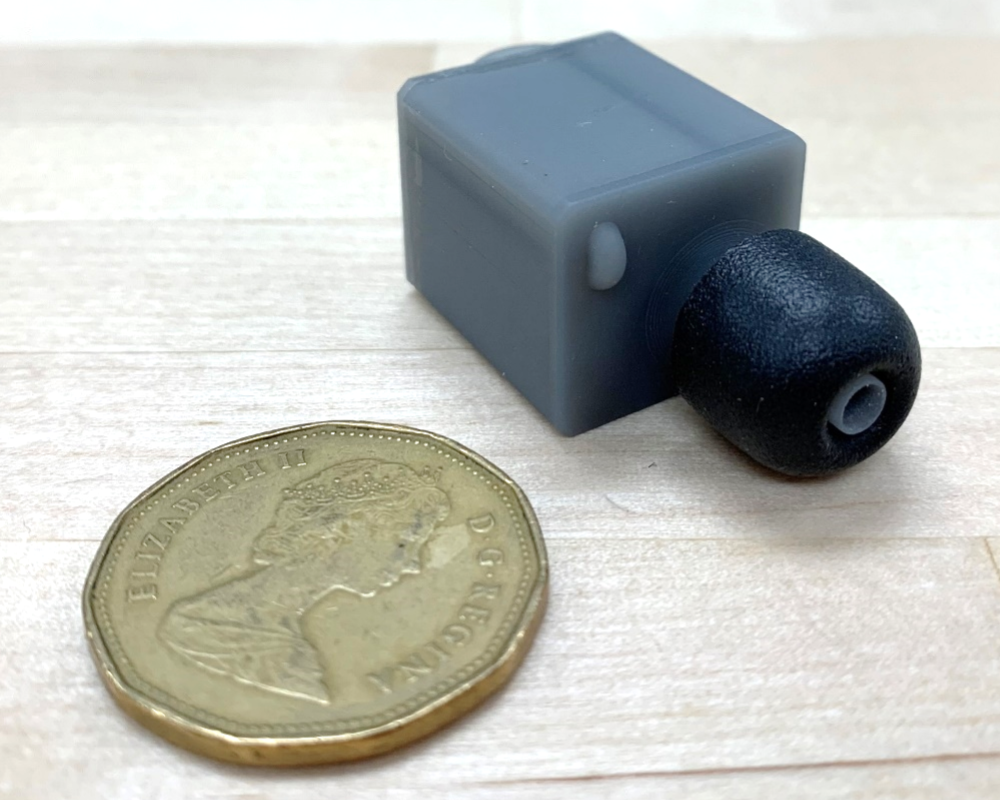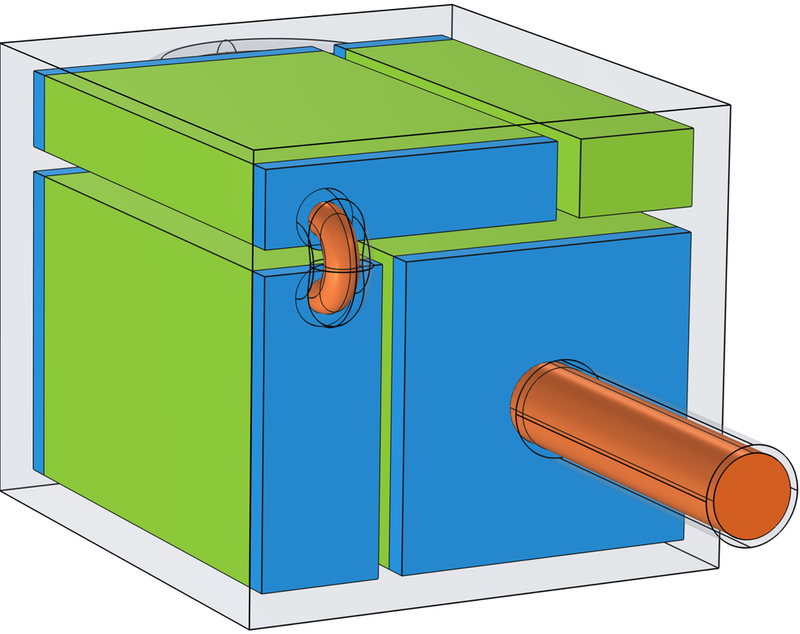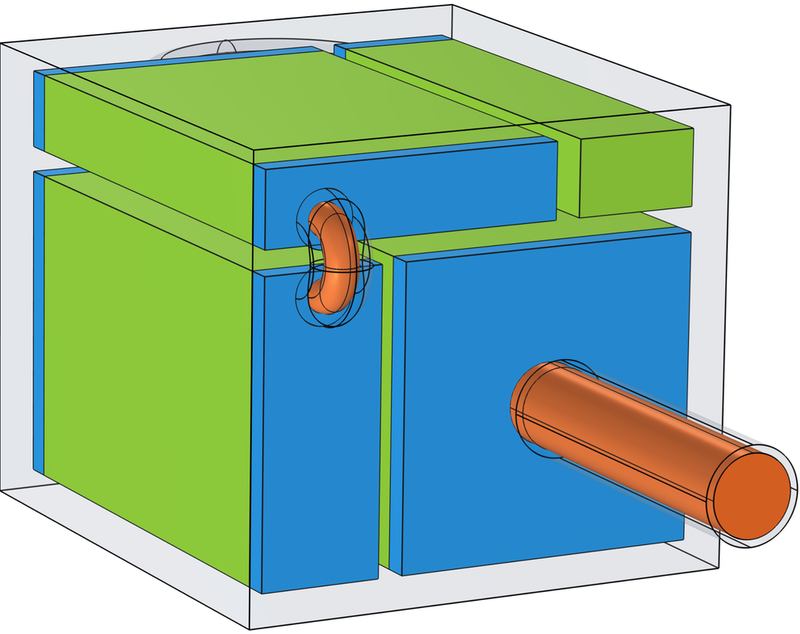Earplugs That Block Out All Sounds
Plugging your ears with cylinders of foam can block out sounds from your surroundings. But it can also amplify and distort noises made by your own body when you chew, walk, or speak. Now Olivier Doutres at École de Technologie Supérieure, Canada, and his colleagues have designed an earplug without this so-called occlusion effect [1]. The researchers presented their design at the Canadian Acoustical Association’s annual meeting, which took place in Montreal earlier this month.
Occlusion-induced sound effects typically arise for tightly fitting earplugs or for hearing aids that extend only a centimeter or so into the outer-ear canal. This distance is short enough to leave a gap between the eardrum and the end of the earplug; such a gap is just the right size to amplify low-frequency physiological sounds that propagate through the body, transmitted through bones and soft tissues. This amplification is strong enough that these otherwise imperceptible sounds become loud enough to hear. Users of hearing aids and passive hearing protection have long complained of this problem, which researchers have found both difficult to measure and to correct. Ventilated hearing aids; custom-made, deep-fitting earplugs; and active noise-cancelling electronics currently offer the best solutions—but those can be uncomfortable, inefficient, or expensive.
To develop a low-cost passive device with no occlusion effect, Doutres and his colleague Kévin Carillo turned to metamaterials—composite materials that can be engineered to have specific properties. They created a 3D-printed, rigid, cube-shaped structure containing four foam-filled cuboids separated by hollow, narrow tubes, which together formed a network of resonant structures.
The meta-earplug was designed such that the acoustic impedance of its ear-canal-facing outer walls—how well sound waves propagated though the walls—matched that of the unobstructed ear canal. This matching allowed sound waves in the ear canal to easily pass into the device, where some were then trapped in the device’s resonant structures. Through experiments conducted using an artificial ear developed for auditory tests, the team showed that their “meta-earplug” can remove the occlusion effect for frequencies between 300 Hz and 1 kHz—a range where the phenomenon is most prominent—while also attenuating environmental noise to industry standards.
The meta-earplug is not ready for prime time, though: it has yet to undergo human testing, and it is not yet easily wearable. To make it comfortable for users, Carillo plans to reshape the 3D-printed, cube-shaped structure so that it sits flush in the outer ear. “I’m confident that we’ll be able to adapt [the design to make] hearing aids, too,” Carillo says. He notes that industries that produce earplugs have already shown interest in the initial demonstration.
Meanwhile, Doutres has also been working on another aspect of the occlusion problem: developing a standardized rating for earplugs that wearers can use to determine how well a particular device performs. Doutres and graduate student Hugo Saint-Gaudens, along with others, have developed a methodology to assess the occlusion effect induced by earplugs. The method involves measuring the sound pressure level inside and outside of the ear canal when a user is wearing the earplug [2]. With tests on volunteers, the team now aims to create a rating scale that links the sound pressure level to the discomfort caused by the occlusion effect. “Providing this rating for any model of earplug would give [users] a way of choosing something that best suits their needs,” Saint-Gaudens says.
Hemanth Narayan Shetty, a lecturer in audiology at the All India Institute of Speech and Hearing, says that measuring the occlusion effect could “improve comfort and acceptance of hearing aids, leading to better compliance and improved communication.” Robert Sweetow, a professor emeritus of otolaryngology and audiology at the University of California, San Francisco, agrees. Sweetow is also excited by the meta-earplug design. It has “significant potential” for use in future hearing protection and hearing-aid devices, he says. Carillo hopes that this is the case. He notes that today it is common to find metamaterials in large-scale panels designed to soundproof a room, for example. “Marrying [these materials] to the tiny scale of an in-ear device is a brand-new idea that has the potential to significantly improve acoustic comfort,” he says.
–Rachel Berkowitz
Rachel Berkowitz is a Corresponding Editor for Physics Magazine based in Vancouver, Canada.
References
- K. Carillo et al., “Passive earplug including Helmholtz resonators arranged in series to achieve broadband near zero occlusion effect at low frequencies,” J. Acoust. Soc. Am. 154, 2099 (2023).
- H. Saint-Gaudens et al., “Towards a practical methodology for assessment of the objective occlusion effect induced by earplugs,” J. Acoust. Soc. Am. 151, 4086 (2022).







